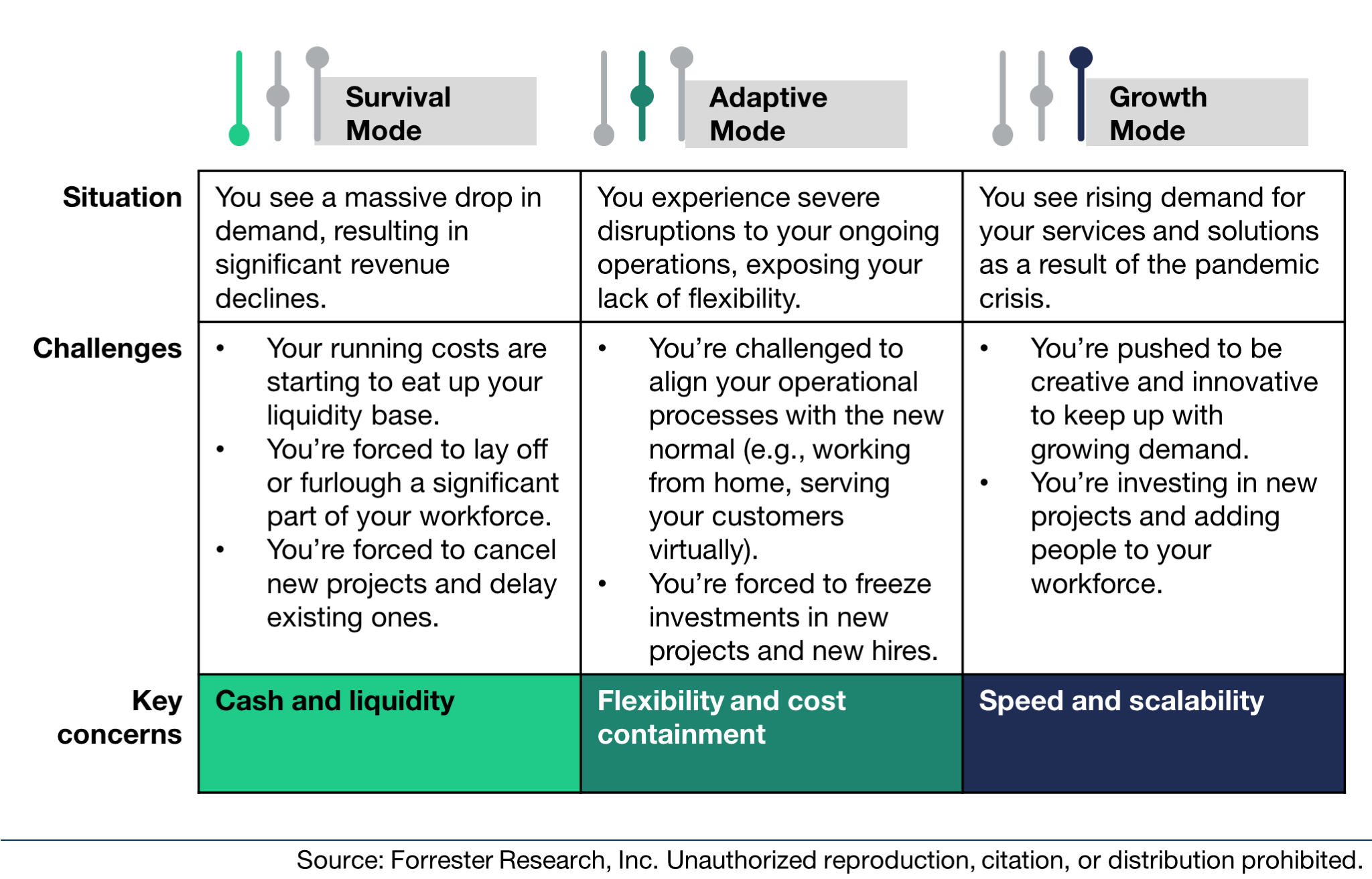How To Adjust Your Tech Budget To Survive Or Thrive In The Pandemic Recession
The old playbook for how CIOs can manage tech budgets through tough times will not work for today’s pandemic. While CIOs and their business partners are under intense pressure to cut tech budgets, technology plays a vital role in business survival and success during this recession.
The coronavirus and efforts to contain its threats have triggered the deepest recession since the Great Depression. Most companies face the prospect that their 2020 revenues will be down by 10% to 25% from 2019 levels — with some suffering devastating revenue drops of 30% to 60% or even higher. Yet to meet the pandemic’s challenges, these same companies must maintain if not increase their tech spending on critical capabilities like security, risk management, customer experience, online commerce, employee experience, and work-from-home arrangements (for examples of these, see “Essential Technology Solutions For Pandemic Management”).
To help navigate the tension between cost cutting and critical investments, Forrester has created a detailed checklist that CIOs and their business partners can look at to adjust their budgets: “Where To Adjust Tech Budgets In The Pandemic Recession: Our Checklist For Where Companies With Different Degrees Of Stress Should Look For Tech Savings And Investment Opportunities.”
Our approach to tech budget management in the pandemic recession recognizes that not all companies are in the same boat. While some struggle for survival, others are adapting and some are growing, as we recently explored. In fact, even in the same industry, different businesses (and even parts of them) can be in a different state. Once leaders understand their mode, they will need to clarify top-level goals and take specific actions to create the right tech budget for their current situation, as well as to react and adjust as their business conditions change in the future:

Firms Should Align Their Tech Spending Based On Pandemic Priorities
- Companies in survival mode will need to cut their tech budgets by 30% or more. This will mean slashing spending on new hardware and trimming the new project budget in favor of those initiatives that are critical for business survival and pandemic management. These companies may also require layoffs of valuable tech staff. And they must look at their contracts for software maintenance, software-as-a-service subscriptions, tech outsourcing, and telecom. This last set of actions will entail tough negotiations with vendors — with the companies willing to accept longer-term agreements if vendors provide 2020 fee waivers or discounts.
- Companies in adaptive mode will need to cut tech budgets by 10% to 20%. Rationalization and delays will be the key priorities. Accelerating a shift to cloud can help trim hardware spending and eliminate maintenance fees for old on-premises software. Dropping redundant or underused applications and delaying big projects with longer-term payoffs will help. And using employees to perform tasks handled by tech services firms or outsourcers may also make sense.
- Companies in growth mode need to economize while investing in growth and supporting key vendors. This environment may tempt firms with solid revenues and balance sheets to beat up on vendors for discounts — but they shouldn’t. Yes, do work with vendors hungry for any business that cut their fees to close new deals. But don’t lean on existing vendors for price breaks, which might cost goodwill and future support and could even drive them out of business.
These are just some of the nuanced ideas addressed in our tech budget checklist. It covers over 70 individual line items typical of tech budgets, covering every budget area, including new project spending on contractors, systems integration services, and new software licenses and subscriptions for front-office operations, as well as back-office systems, computer and communications equipment, existing cloud software subscriptions, software maintenance fees, tech outsourcing, telecom services, and tech staff.
